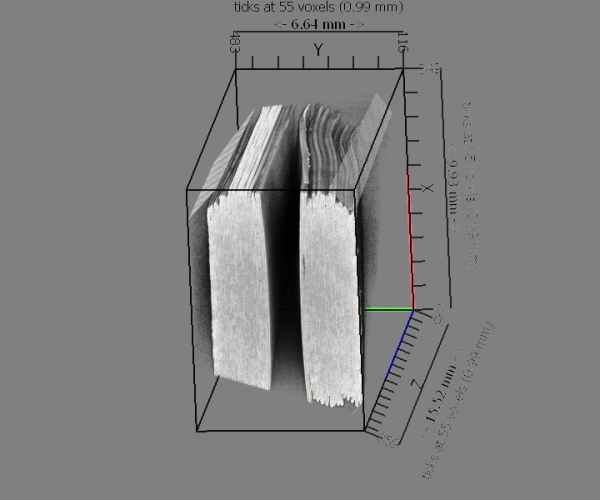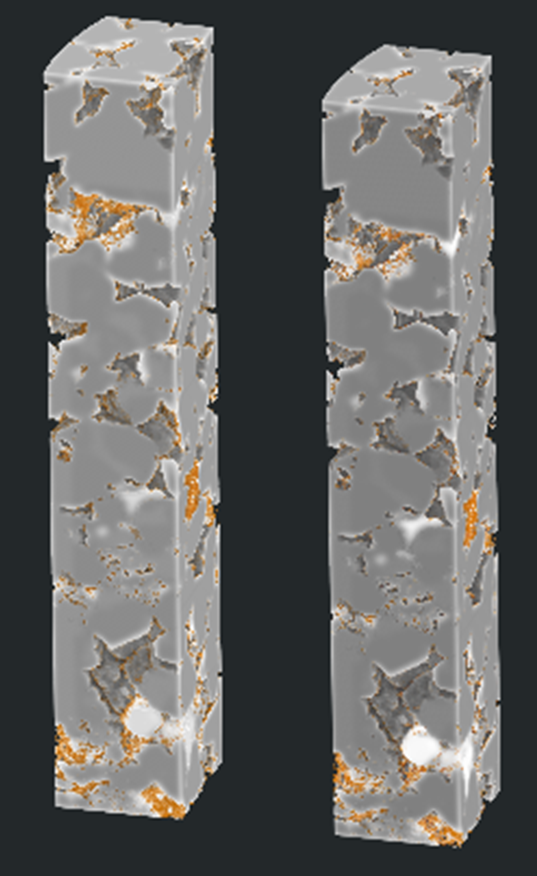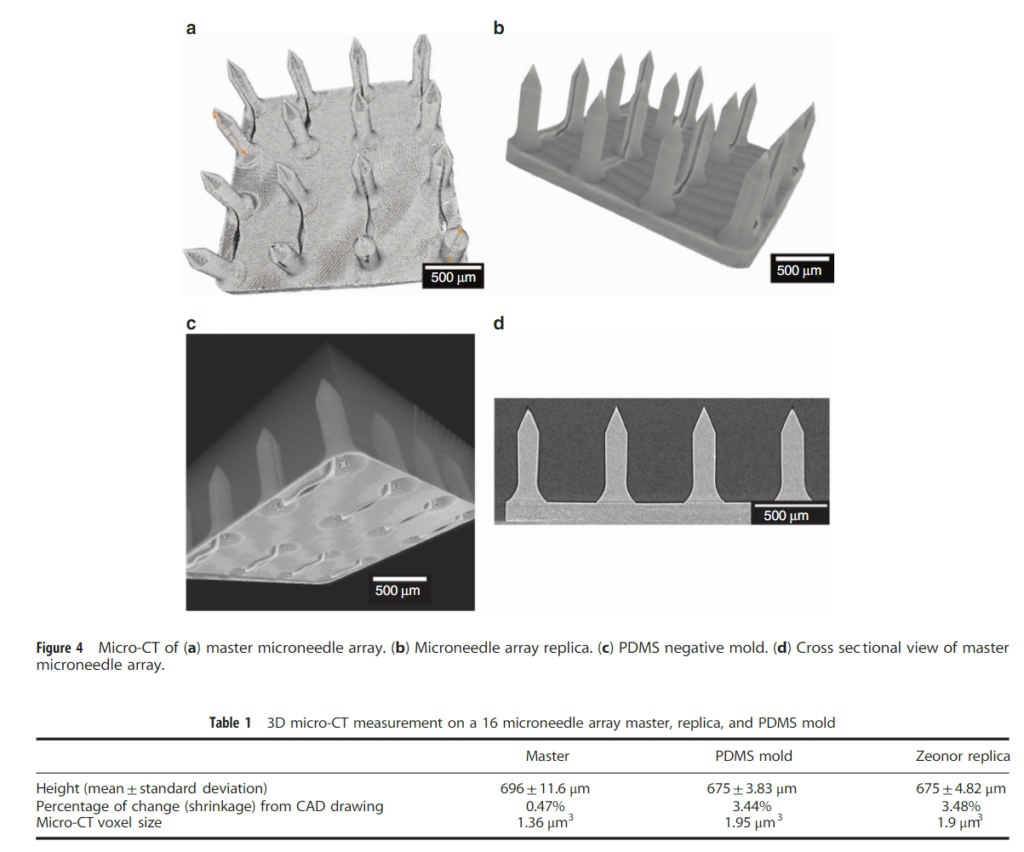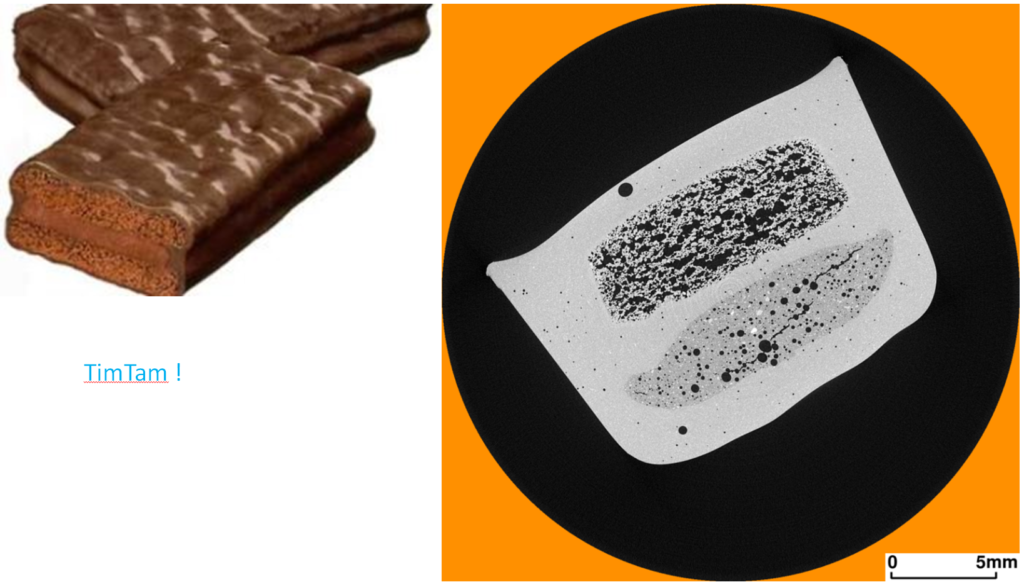Selected projects highlights
3D structural analysis of the biodegradability of banana pseudostem nanocellulose bioplastics
Author: RH Fitri Faradilla, Ji-Youn Arns, Martina H. Stenzeld, Jayashree Arcota, Christoph Arns
Year: 2023
Journal name(draft submitted):
View publication
A comparison between the characteristics of a biochar-NPK granule and a commercial NPK granule for application in the soil
Continual application of nitrogen (N), phosphorous (P) and potassium (K) fertilizer may not return a profit to farmers due to the costs of application and the loss of NPK from soil in various ways. Thus, a combination of NPK granule with a porous biochar (termed here as BNPK) appears to offer multiple benefits resulting from the excellent properties of biochar. Given the lack of information on the properties of NPK and BNPK fertilizers, it is necessary to investigate the characteristics of both to achieve a good understanding of why BNPK granule is superior to NPK granule. Therefore, this study aims to investigate the characteristics of a maize straw biochar mixed with NPK granule, before and after application to soil, and compare them to those for a commercial NPK granule. The BNPK granule, with a greater surface area and porosity, showed a higher capacity to store and donate electrons than the NPK granule. Relatively lower concentrations of Ca, P, K, Si and Mg were dissolved from the BNPK, indicating the ability of the BNPK granule to maintain these mineral elements and reduce dissolution rate. To study the nutrient storage mechanism of the BNPK granule in the soil, short- and long-term leaching experiments were conducted. During the experiments, organo-mineral clusters, comprising C, P, K, Si, Al and Fe, were formed on the surface and inside the biochar pores. However, BNPK was not effective in reducing N leaching, in the absence of plants, in a red chromosol soil.
Authors: Sara Tahery, Paul Munroe, Christopher E Marjo, Aditya Rawal, Joseph Horvat, Mohanad Mohammed, J Beau W Webber, Ji-Youn Arns, Christoph H Arns, Genxing Pan, Rongjun Bian, Stephen Joseph
Year: 2022
Journal name: The Science of The Total Environment
View publication
Micro-CT analysis of process-induced defects in composite laminates using AFP
Abstract: Carbon fiber reinforced polymer (CFRP) composites have been gathering a lot of interest in several engineering applications because of their favorable properties including lightweight and ease of manufacturing. Robotic manufacturing techniques using automated fiber placement (AFP) for aerospace and automotive applications present a growing trend toward error-free manufacturing. AFP manufactured laminates can be prone to internal flaws due to improper selection of manufacturing process parameters. Additionally, internal damage in composite laminates can occur during the operational service of the laminate due to fatigue or foreign object impacts. Identifying and characterizing at the microscopic level may allow optimization of process parameters, leading to higher quality laminates. In this paper, a direct 3D imaging approach to characterize global and local deformation-induced defects in AFP manufactured CFRP laminates using X-ray CT techniques is presented. The investigations are conducted on two sets of thermoplastic PEEK composite laminates (undeformed and deformed) manufactured using a set of processing conditions. The presented approach to quantify the defects provides local and global statistics including the evolution of local 3D fiber orientation as a methodology to detect the degree of deformation.

Gradient-based fibre detection method on 3D micro-CT tomographic image for defining fibre orientation bias in ultra-high-performance concrete
: 3D Image quantification of fibre enforced concrete
Abstract Ultra-high-performance fibre reinforced concrete (UHPC) is a class of advanced cementitious composites characterized by its high compressive and flexural strengths, toughness and enhanced durability. The mechanical properties of the UHPC are to a great extent dependent on fibre volume fraction, orientation and distribution within the cementitious matrix. However, determination of the true three-dimensional fibre orientation and distribution is challenging. In this paper micro-computed tomography (micro-CT) is used to determine these parameters. Cylindrical samples of UHPC were extracted from a dogbone tension test specimen and from a pretensioned bridge girder, and high-resolution micro-CT images were then acquired. Using the scanned data, and following three-dimensional image reconstruction and image processing, quantitative fibre information was obtained via a novel image post-processing technique based on local-intensity gradient significantly improving cross-fibre detection compared to existing techniques. The estimated fibre volume fraction is close to design and experimentally measured values. Straight and hooked end fibres in UHPC sample were successfully identified and segmented using this novel technique. The test results show the fibre arrangement to be highly anisotropic with fibres aligned predominantly in one direction, which is attributed to the casting processes and flow.
Author: Marta Miletić, Lakshminarayanan MohanaKumar, Ji-YounArns, AnkitAgarwal, Stephen J.Foster, Christoph Arns, DunjaPerić Year: 2020 Journal name: Cement and Concrete Research
Imaging analysis of fines migration during water flow with salinity alteration
: time-lapsed 4D imaging to provide the evidence and the physical insight of fine mineral movement from salinity flooding
Abstract Fines migration is considered one of the mechanisms of permeability alteration associated with water injection in aquifers and oil reservoirs. However, there has been limited direct evidence of fines migration. This paper presents conclusive evidence for the migration and capture of fines, obtained from experiments utilising 3D micro-CT imaging. A single-phase flooding experiment was performed on a Berea sandstone core plug. First, a micro-CT image of the dry core plug was taken before flooding. Then the core plug was saturated with 4% NaCl brine, further injected with 4% NaCl brine, and finally flushed with fresh water. The pressure difference across the core plug was monitored during these fluid injections, and produced water samples were analysed for fines concentration and type by combining particle counting methods and Scanning Electron Microscope – Energy Dispersive Spectroscopy (SEM-EDS) analysis. After the flooding experiment, the core plug was reimaged, and the second micro-CT image was compared to the first to quantify the fines migration. Laboratory measurements showed an 80% decrease in permeability during fresh water injection, which was accompanied by a large concentration of fines in the produced-water samples. SEM-EDS analysis of those fines showed them to be clay. Comparison of initial and final tomogram images showed increased micro-CT intensity in the flow direction near the core outlet, due to relocation of clay. Permeability computations made on micro-CT images showed a 50% decrease in permeability during fresh water injection, due to fines straining near the core outlet. Modelling of retention concentration along the core length and of breakthrough fines concentration versus pore volume injected indicated that fines retention was nonlinear.

Fig : Yellow particles are clay in sandstone and the rock before salinity flooding [left] & after [right] are shown.
Author: M.Yu F.Hussain, J.-Y.Arns, P.Bedrikovetsky, L.Genolet, A.Behrd, P.Kowollik, Year: 2018 Journal name: Advances in water resources
High-fidelity replication of thermoplastic microneedles with open microfluidic channels
: the 3D medical device imaging to provide accuracy of the manufacturing outcome
Abstract: Development of microneedles for unskilled and painless collection of blood or drug delivery addresses the quality of healthcare through early intervention at point-of-care. Microneedles with submicron to millimeter features have been fabricated from materials such as metals, silicon, and polymers by subtractive machining or etching. However, to date, large-scale manufacture of hollow microneedles has been limited by the cost and complexity of microfabrication techniques. This paper reports a novel manufacturing method that may overcome the complexity of hollow microneedle fabrication. Prototype microneedles with open microfluidic channels are fabricated by laser stereolithography. Thermoplastic replicas are manufactured from these templates by soft-embossing with high fidelity at submicron resolution. The manufacturing advantages are (a) direct printing from computer-aided design (CAD) drawing without the constraints imposed by subtractive machining or etching processes, (b) high-fidelity replication of prototype geometries with multiple reuses of elastomeric molds, (c) shorter manufacturing time compared to three-dimensional stereolithography, and (d) integration of microneedles with open-channel microfluidics. Future work will address development of open-channel microfluidics for drug delivery, fluid sampling and analysis.

Author: Zahra Faraji Rad, Robert E. Nordon, Carl J. Anthony, Lynne Bilston, Philip D. Prewett, Ji-Youn Arns, Christoph H. Arns, Liangchi Zhang & Graham J. Davies Year: 2017 Journal name: Nature
Other interesting tests
Application of food science : TimTam cookie

Application of civil engineering : cement hydration
- 56 sets of 3D time-lapsed imaging
- >1 TB data stored in Australian supercomputer facility
- Percolation type of material connectivity analysis
Application of medical science : mice leg
- Success more than 10 times trial imaging
- Detection of not only bone but also muscle